Combat P51 Mustang
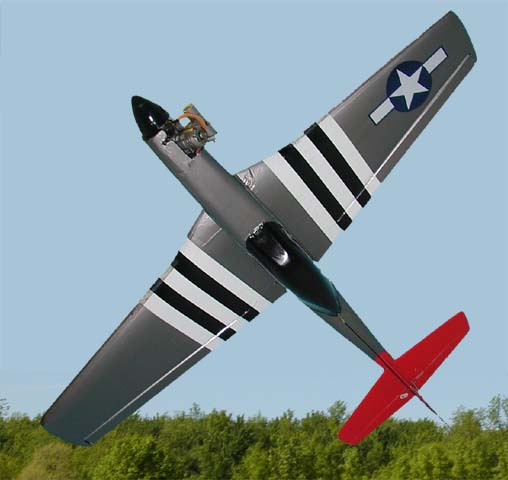 |
|
This is Eric's Combat P51 Mustang featured in a highly doctored photo (the plane was hanging on his bedroom wall at when the photo was taken).
|
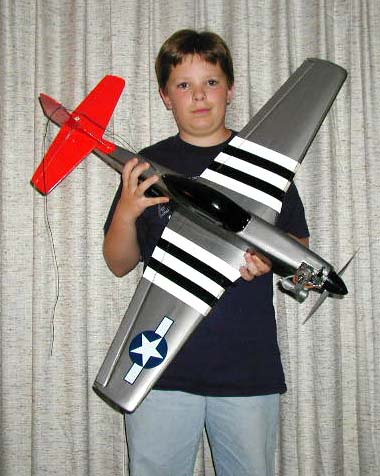 |
|
Eric with his plane just after one of it's many repairs.
|
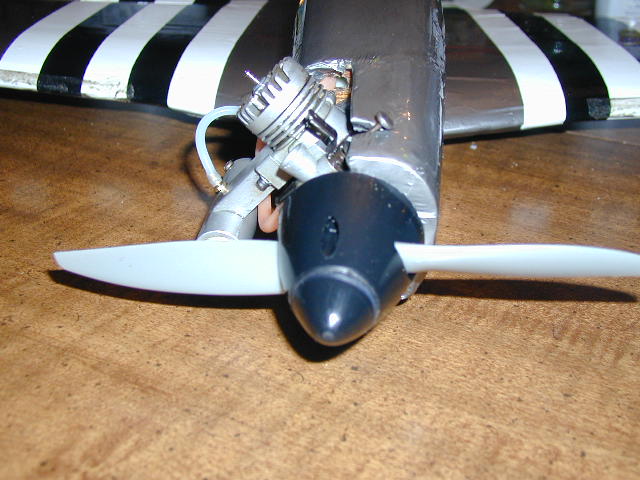 |
|
We had an old Fox .15 on the plane. This is enough to pull the plane through the air
at very high speed (we don't know how high, but in a dive we know it is over 100mph).
Eric put an OS .25 on it and flew it even faster a few times before striping the
electronics out for another plane.
|
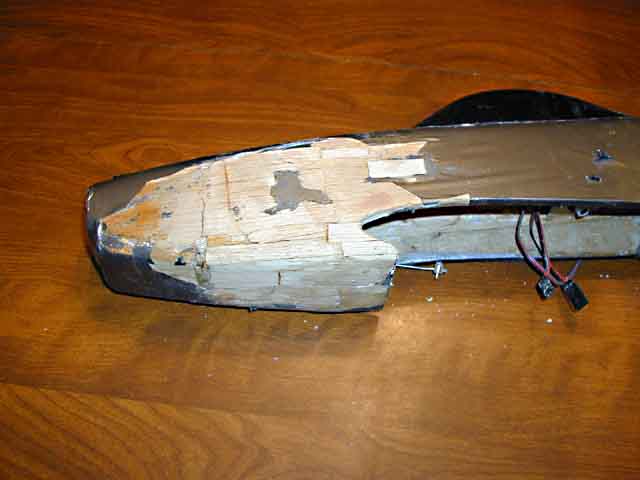 |
|
This plane has crashed many times. Eric bought is used, and it was already used to crashing.
Then I set the CG wrong (3 times). And once Eric just lost his orientation on landing.
|
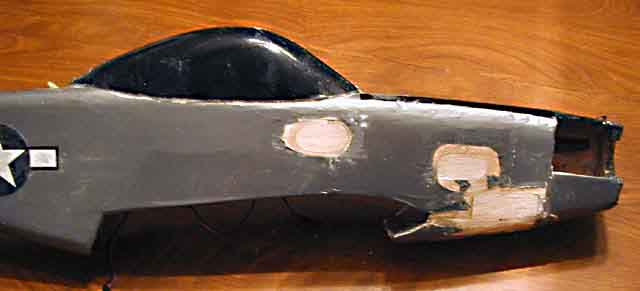 |
|
It is really amazing what can be done with a Dremel tool and super glue!
These repair photos were taken a few days before the photos above.
It has been flown several times since then.
|
About combat: This class of plane has to be a WWII replica (within 10% of scale), weigh no more
than 3lbs, and have a motor no larger than .25ci. They pull 30 foot streamers and up to 6 of them
chase each other around the sky for 7 minutes trying to cut the other guys' streamer with the prop
or the wing.
Eric had a 4 ounce tank in this plane, but that only gave him 6.5 minutes of flight. About 10 minutes
is recommended for 7 minute combat. He now carries 8 ounces. These planes land on their bellies.
If wheels were included they would have to be scale, and they would be too small. This is a 3-channel
plane; aileron, elevator, and throttle. The control surfaces don't move much. The ailerons move
about 1/8 inch in either direction. This is plenty. The elevator doesn't move much either. If just
a little too much elevator is put in, the plane snaps into a roll. Just the way the full sized P51 did,
I'm told.
Eric hasn't flown this in combat yet, but the previous owner did.
Up
Home





